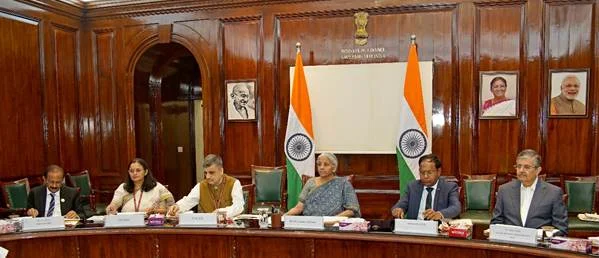In a surprise move, the Reserve Bank of India, led by Governor Sanjay Malhotra, slashed rates—the most significant reduction in half a decade—to fuel an aspirational 7–8% economic growth drive. Analysts warn of potential long-term volatility and reduced policy flexibility .
RBI’s Bold Pivot: Betting Big on Growth
India’s central bank has taken an unexpected leap, surprising analysts with its most aggressive rate cut in five years. The move marks a dramatic policy shift under Reserve Bank of India (RBI) Governor Sanjay Malhotra, who is pushing for accelerated growth even as the global economic outlook remains uncertain.
A High-Stakes Gamble
At last week’s monetary policy meeting, markets were bracing for a mild rate cut, possibly a symbolic nod toward easing. Instead, the RBI delivered a deep rate slash and signaled an era of easy liquidity—an uncharacteristically bold strategy from an institution known for its cautious stance.
Governor Malhotra, who has been at the helm for just seven months, has made it clear: the RBI is now prioritizing high growth. He laid out an ambitious vision—an “aspirational” annual GDP growth of 7–8%, up from the already impressive 6.5% projected this year. The message? India isn’t just doing well—it must do better.
Why the Rush?
With inflation under control, the central bank appears to be seizing a window of opportunity. Analysts interpret the RBI’s actions as a clear signal: it’s prepared to go all-in to sustain and elevate growth, even if that means stretching its usual risk boundaries.
The logic is partly demographic. To absorb the growing workforce of a 1.4 billion-strong population, India needs growth closer to 8% annually. Without that momentum, job creation will lag behind demand, leading to broader socio-economic challenges.
Concerns on the Horizon
However, not everyone is convinced. Critics warn of unintended consequences. Mridul Saggar, a former RBI monetary policy committee member, expressed caution, noting in The Hindu Business Line that the benefits of such a bold cut may be short-lived—perhaps nudging up mortgage lending in the short term, but reducing room for future policy adjustments.
Others echo similar worries: front-loading rate cuts might restrict the RBI’s ability to respond to future shocks, especially if global inflation rears its head again or capital flows turn volatile.
A New Chapter in Central Banking?
Since taking charge, Malhotra—a former engineer turned bureaucrat—has steered the RBI in a new direction. From recalibrating liquidity norms to deferring tighter banking regulations, the changes suggest a broader strategic shift toward a growth-first agenda.
Whether this gamble pays off or leaves the Indian economy exposed remains to be seen. But one thing is clear: the RBI under Malhotra is rewriting its rulebook—and the world is watching.






